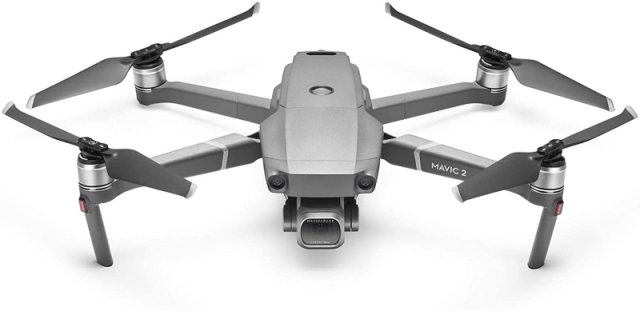What is Geofencing?
By Timothy Tibbettson 06/15/2023 |
When looking at Location options in Windows 10, you might have noticed the Geofencing option. While it might sound like Geocaching, it's not even close. Here's all you need to know.
Geofencing is one of the many Location options, and it allows an app to trigger an action when a mobile device or RFID tag enters or enters a pre-defined area on a map.
The possibilities are endless. When a device or RFID tag enters or exits a map area, you can send a text message, push notification, social media post, and more. You could use it to track vehicles or employees entering or leaving the workplace. Stores can use it to offer coupons and deals when you enter or exit, or even marketing data. Geofencing is used in places and things you see every day but never thought about.
A great example is drones.

Modern drones are programmed for Geofencing so they can be identified and allowed or denied access. The FAA can use Geofencing to stop a drone in midair or send a warning message if a drone flies into aviation space or Government building. Basically, anywhere drone flying is restricted. Pretty cool.
An administrator or developer can define an area on a map, including Google Maps or Bing. End-users will most likely never set up Geofencing themselves. Geofencing is mostly used on mobile devices requiring you to download an app. Currently, Windows 10 does not include any apps with Geofencing, so if you check your privacy settings, you won't have any Geofencing app to worry about.
Privacy is an obvious concern. As you can see, an employer or the Government can use it regardless of your opinion, and most apps should ask for your consent, giving you the option. Apps including Snapchat already use Geocaching. SMART appliances can use Geofencing when you get near or leave home. Geofencing has been used in the past by Christian groups to target women in abortion clinics. Regardless of your politics, that's a good example of how Geofencing can be used for evil. Because of that case, Massachusetts was the first state to object to a company engaging in GPS-based ad targeting.
Geofencing is likely to become more common in the future. It's always a good idea to be aware of the apps you install and the permissions you allow.
Similar:
How to Disable Windows 10 Activity History Permanently
How to Clear Your Activity History in Windows 10
How to Enable, Disable, or Change Your Location in Windows 10
How to Disable App Suggestions and Advertising in the Start Menu
How to Disable All Advertising and Sponsored Apps in Windows 10
How to Disable Advertising ID for Relevant Ads in Windows 10
comments powered by Disqus
Geofencing is one of the many Location options, and it allows an app to trigger an action when a mobile device or RFID tag enters or enters a pre-defined area on a map.
The possibilities are endless. When a device or RFID tag enters or exits a map area, you can send a text message, push notification, social media post, and more. You could use it to track vehicles or employees entering or leaving the workplace. Stores can use it to offer coupons and deals when you enter or exit, or even marketing data. Geofencing is used in places and things you see every day but never thought about.
A great example is drones.

Modern drones are programmed for Geofencing so they can be identified and allowed or denied access. The FAA can use Geofencing to stop a drone in midair or send a warning message if a drone flies into aviation space or Government building. Basically, anywhere drone flying is restricted. Pretty cool.
An administrator or developer can define an area on a map, including Google Maps or Bing. End-users will most likely never set up Geofencing themselves. Geofencing is mostly used on mobile devices requiring you to download an app. Currently, Windows 10 does not include any apps with Geofencing, so if you check your privacy settings, you won't have any Geofencing app to worry about.
Privacy is an obvious concern. As you can see, an employer or the Government can use it regardless of your opinion, and most apps should ask for your consent, giving you the option. Apps including Snapchat already use Geocaching. SMART appliances can use Geofencing when you get near or leave home. Geofencing has been used in the past by Christian groups to target women in abortion clinics. Regardless of your politics, that's a good example of how Geofencing can be used for evil. Because of that case, Massachusetts was the first state to object to a company engaging in GPS-based ad targeting.
Geofencing is likely to become more common in the future. It's always a good idea to be aware of the apps you install and the permissions you allow.
Similar:
comments powered by Disqus






